GRACE AND TRUTH





Dr. Michael A. Milton - Doxological Evangelism
Faculty Spotlight - With Praise & Thanksgiving: Worshiping Our Triune God As The Church
Dr. RJ Gore - Reflections on Christian Worship
Dr. Mark Ross - Improving Your Baptism
Dr. Loyd Melton -From the Preacher’s Toolbox
Student Spotlight
Rev. Justin Brickey - An Interview
Alumni Spotlight
Dr. Brad Anderson - Worship as a Means of Grace
Alumni Spotlight
Dr. Mark Baynes - Organ Pipes or Six Strings?
Dr. Michael A. Milton
Dr. RJ Gore
Dr. Mark Ross
Dr. Loyd Melton
Rev. Justin Brickey
Dr. Brad Anderson
Dr. Mark Baynes
Mr. Heath Milford
Dr. Michael A. Milton, Executive Editor
Mr. Heath Milford, Editor
Dr. Mark Ross, Assistant Editor
Mrs. Langley Shealy, Graphic and Design
Photography: Mrs. Langley Shealy, Shawn Knox

Sahina was an adolescent girl who lived in a village in the northern part of India. Like her neighbors, she worshiped many gods. Each of these gods was represented by an image, statute, or some other physical design. She was devout, and her devotion created a warm, hospitable, and gracious young lady. One day a friend invited her to come to a service being held by a Christian missionary. There was talk that some of her fellow villagers were beginning to follow Jesus Christ. So, she accepted the invitation out of goodwill.
When she entered the assembly, an outdoor event along Ganges River, she sat down in a folding chair. The people there were warm and welcoming—however, the worshipers in her temple were, likewise, warm and welcoming. There was a sense of reverence and joy. Yet these were also familiar emotions she knew from her religious experiences. But what she had not experienced was what came next. The worship service was led by a pastor who declared that Jesus Christ lived the life we could never live and died the death that should have been ours. He rose again on the third day and was seen by over 500 people. He ascended into heaven, where he exercises the ministry of prayer for us now. And, the pastor said, Jesus is coming again. Then he invited the congregation to kneel and pray to Jesus Christ, who was present in their assembly. It was this one thing that was different than anything else she had ever experienced: worshiping a God that she could not see. The power of God’s Word and the presence of the Holy Spirit transformed Sahina’s life on that Sunday evening. She went home to her family and declared, “I am a follower of Jesus the Savior. I am a member of those disciples of Jesus who kneel and pray to the one they cannot see but who is present.”
While I have used a pseudonym, Sahina, to represent the young lady in the story, the rest of the testimony is entirely factual. And there is a name for what I have described: Doxological Evangelism. We know what evangelism means. It’s the act of proclaiming: “repent and receive the Lord Jesus Christ” as God’s provision for your eternal salvation. Doxology is a word from the Greek doxa, “glory,” a hymn of praise. Combined, the phrase, Doxological Evangelism, is the power of God to draw human beings into the worship of the living God, the liturgical reenactment of the gospel of Jesus Christ, so that souls are saved, and lives are transformed.
Erskine Theological Seminary is committed to preparing people to worship God and equipping evangelists who call others into that divine worship. As you read this issue, you will witness our professors’ and alumni’s teachings and commitments, all with an aim of producing doxological evangelists, those who are leading others to receive Christ and enter a life of worship. Indeed, it is the glorious vision of God for people of all tongues and tribes and nations to be gathered with Him in cosmic worship. The entire universe is moving toward that day when this truth, revealed in Scripture, will become reality. We pray that you begin to experience this reality now. Jesus is worthy. Come let us worship Him!

MICHAEL A. MILTON, PhD, MDiv, MPA
James H. Ragsdale Chair of Missions and Evangelism
Burden: [why we exist]
Erskine Theological Seminary, an agency of the Associate Reformed Presbyterian Church, exists because Jesus Christ calls laborers for His harvest who are skilled in handling the Word of God.
Values: [non-negotiable essentials that guide us]
Erskine Theological Seminary is grounded in the person and work of the only Savior of mankind, our Lord Jesus Christ; as He is presented in the inerrant and infallible Holy Scriptures; the summary of which is found in the Westminster Standards; and taught with academic excellence by qualified pastor-scholars in a nurturing and gracious community of learning.
Vision: [how we lift the burden]

Erskine Theological Seminary is a Biblical, Reformed, and Evangelical Seminary community united in faith, sustained in prayer, supported by a growing constituency, and fueled by the power of the Holy Spirit for Gospel transformation in every area of life.
Mission: [how we move towards the vision]
Erskine Theological Seminary prepares men and women to fulfill the Great Commission of Jesus Christ through theological higher education that is ecclesial, missional, and confessional.
Philosophy of Ministry: [how we do our work]
Erskine Theological Seminary promotes the Vision and Mission through Biblical and confessional faithfulness, multiple modalities, and academic excellence, set in a loving, pastoral community of service.
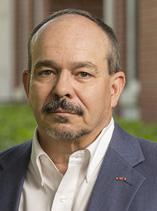
RJ Gore, Professor of Systematic Theology
It has been nearly twenty years since my book, Covenantal Worship, was printed 1. I have been asked to reflect on what I have learned over the last two decades. Perhaps, most important among my reflections is the conviction that what I wrote in 1988 for my dissertation, and then later published in 2002, remains fundamentally accurate— despite the many criticisms I have received. And I have not been alone in this conviction. For about ten years I was privileged to serve alongside Dr. Hughes “Scoti” Oliphant Old, John H. Leith Professor of Reformed Theology and Worship, and Dean of the Institute for Reformed Worship at Erskine Seminary. On a number of occasions, Scoti pulled me aside and simply said, “You are right, and your critics are wrong.” Coming from the leading authority on Reformed worship, those words were tremendously encouraging. He also shared his conviction that, at its root, the Puritan Regulative Principle of Worship (RPW) was not Reformed but Anabaptist!2 That is truly thoughtprovoking, but I will resist the temptation to be distracted. There are other things I want to share in this brief article.
Resources
What else is important, some twenty years down the road? Since 2002, there have been many books published that provide tremendous help for worship leaders and excellent resources for those who teach classes on Christian Worship. In this limited space, I cannot give an exhaustive list, but I will mention two at the very top of my list. The first book is Christ-Centered Worship by Bryan Chapell, former President of Covenant Theological Seminary.3 In my course on Christian Worship, I require the Chapell text along with James F. White, Introduction to Christian Worship. 4 White has been the “go to” text since its first edition in 1980. White covers the earth, looking at the breadth of Christian worship over the course of time. As a result of this broad focus, a number of concerns shared by Presbyterian and Reformed believers are given insufficient attention. Chapell provides the depth of discussion that supplements the wide spectrum of White’s introduction.
Chapell also serves the Presbyterian community well by providing a sequel to the classic, O Come, Let Us Worship: Corporate Worship in the Evangelical Church, by Robert Rayburn, the founding President of Covenant Theological Seminary.5 Rayburn said, “I have written this book for all evangelicals. I have attempted to refrain from emphasizing those elements of corporate worship
which are distinctly Reformed, except in the consideration of the sacraments.”6 And, since it was published in 1980, it has little to say about the transformation of traditional worship into more contemporary forms. A truly helpful book, Rayburn focuses on those points that would be most familiar to “traditional” worshipers, regardless of their denominational label. As Chapell explains, “His order of service was a perceptive summary of North American traditions birthed in frontier revivalism combined with a respectful reiteration of Westminster Puritanism.”7
Chapell is more focused and more intentionally concerned with Presbyterian and Reformed distinctives. Part 1, “Gospel Worship,” provides a number of different “stories” that introduce the reader to worship throughout history: “The Roman Story, Luther’s Story, Calvin’s Story, Westminster’s Story, the Modern Story, [and] the Gospel Story.” Part 2, “Gospel Worship Resources,” provides discussions of key elements in a standard, Presbyterian order of worship (e.g., Call to Worship, Confession of Sin, Assurance of Pardon and so forth) as well as providing numerous examples.
In Part 1, Chapell explains the proper role of tradition in worship. He writes:
We consider the history because God does not give all of his wisdom to any one time or people. Slavish loyalty to traditions will keep us from ministering effectively to our generation, but trashing the past entirely denies God’s purposes for the church on which we must build. If we do not learn from the past, we will lose insights God has granted others as they have interacted with his Word and people.
Always we are to be informed by tradition; never are we to be ruled by it. The Word of God is our only infallible rule of faith and practice, . . .8
The two great contributions of Chapell’s work are his significant update of Rayburn’s work as well as his balanced approach to the “flash-points” that unnecessarily divide the church. Chapell summarizes his approach to worship, “The witness of the gospel requires some structure, but it requires some freedom too.”9
The second book I want to highlight is Reformation Worship, a book on “Liturgies from the Past for the Present.”10 This is not the first attempt to pull together historical liturgies from the Presbyterian and Reformed tradition. Charles W. Baird compiled a series of liturgical sketches and published them in 1856, originally under the title A Chapter on Liturgies. This was reprinted in 1960 and provides several chapters on John Calvin, John Knox and Scottish worship, Puritan worship, Richard Baxter, and worship in other Reformed contexts. The Baird book is helpful, but nothing like Reformation Worship! To begin with, Reformation Worship is massive, nearly 700 pages long. Chapter 1 is a marvelous chapter on worship through time, beginning in Eden and leading to “the coming consummation.”11 Chapter 2 describes the process of liturgical renewal during the Reformation and highlights some of the key principles that guided liturgical reform. Chapter 3
builds on these two chapters and provides principles to help “the modern church to reflect critically on how she worships today.”12 Chapters 4 through 17 survey worship in the Reformation, beginning with Luther’s German Mass (1526) and ending with Middleburg’s Puritan liturgy (1586). These chapters all provide an introduction to the historical setting of the form of worship, an outline of the order of worship, and a discussion of significant contributions made by the key proponents of that form of worship.
At the same time my book was published, Colleen Carroll, a Roman Catholic journalist and author, penned her seminal work, The New Faithful, which recorded the movement of collegeaged young people towards more historical, liturgical forms of worship as in Anglicanism, Roman Catholicism, and Eastern Orthodoxy.13 Another volume appeared in 2002, Robert Webber’s The Younger Evangelicals. For Webber, along with other significant trends, he documented the younger evangelicals’ commitment to an “ancient-future faith.” By this Webber “mean[t] an evangelicalism connected to the past, especially to the church fathers, the sixteenth-century Reformers, and the Wesleyan movement.”14 Over ten years later the Christian Pundit was making similar observations about young evangelicals still “getting high” in their church affiliations.15
Today the North American context continues to offer a wide spectrum of worship options. But there is something more significant at work. In 2021, I would argue that the debate over whether to attend a formal worship service or a more contemporary worship service has less traction than twenty years ago. Increasingly the question is less about what kind of worship to attend than it is about why attend any church service at all. In 2014, James Emery White published The Rise of the Nones.16 Early in the book, White notes that a 2008 study indicated that from 1990 to 2008 the number of Americans describing themselves as having no religious affiliation, or “Nones” almost doubled.17 In 2014 they were nearly 20% of the American population.
White followed up with a volume on the “final generation,” Meet Generation Z. 18 White says that “Generation Z will inevitably challenge every church to rethink its strategy in light of a cultural landscape that has shifted seismically.”19 “Gen Z, born between 1999 and 2015, is beginning to reach college and high school, and in many ways, they’re vastly different from their millennial predecessors — less religious, more success-oriented, more diverse, more captivated by technology and more likely to embrace different views on sexual identity. Is your church prepared to help them flourish in this new cultural landscape?”20
Concerns about the rise of the “Nones” and Generation Z lead to a third book I want to mention—a book quite different from the other two. First, the author is not Presbyterian or Reformed. Winfield Bevins was brought up Southern Baptist, “came to faith in a Pentecostal Church,” and discovered a “little parish church” where he “fell in love with the beauty and mystery of liturgy.”21 Today he is the director of church planting at Asbury Seminary in Wilmore, Kentucky. The subtitle
of his book indicates its purpose: “The Allure of Liturgy for a New Generation.” He is aware that the church has been losing ground with the “Nones” and the “GenZs.” One of the endorsements for this book explains its significance this way: “Ever Ancient, Ever New brings together the best of Winfield, yielding something like a field guide to the mix of Gospel, culture, church, young people, and liturgy.”22
I require this as one of the texts for my Christian Worship class. I do so, not because I agree with everything he says, but because he raises important questions about how the old and the new can complement one another. In other words, this is not the book to explain Presbyterian and Reformed worship; Bryan Chapell does that. And this is not the book to find historic liturgies that might inform our current worship; Reformation Worship does that. No, this is a book that helps you determine the questions you need to ask as you seek to apply historic worship to our contemporary world. Bevins also is keen on what he calls the “three streams” that flow into one river: the Charismatic, the evangelical, and the liturgical.23 With the challenges of the “Nones” and the “GenZs,” some of the old arguments over worship style and musical preferences may become increasingly less important.
I have been asked if I would do anything differently today if I were revising Covenantal Worship for a second edition. The answer is yes. Aside from minor editorial corrections, I think I would want to include an additional discussion of two passages of Scripture I have been pondering for some time. Numbers 9:1-14 deals with keeping the Passover and provides guidance for individuals who are unclean or on a long journey and cannot observe the Passover at the proper time and in the normal way. Presumably such exceptions would be infrequent and occasional. Compare the “outline” guidance in Numbers 9 to II Chronicles 30 where Hezekiah and his leaders make alternate plans for the entire nation to observe the Passover a month late— and with a host of irregularities. Restoration of the temple had not been completed in time for observing Passover in the first month; “the priests had not consecrated themselves in sufficient number”; “nor had the people assembled in Jerusalem” (II Chron. 30:3).
The failure to obtain proper consecration resulted in significant changes. The people “ate the Passover otherwise than as prescribed” and these modifications were serious enough that “Hezekiah had prayed for them [the people of God], saying ‘May the good Lord pardon everyone who sets his heart to seek God . . . even though not according to the sanctuary’s rules of cleanness’” (II Chron. 30:18-19). Then verse 20 adds the comment, “And the Lord heard Hezekiah and healed the people.” From a small list of exceptions in Numbers 9 to the entire nation modifying the Passover and praying for pardon as they do so in II Chronicles 30 is quite the leap! I am not sure the RPW can account for II Chronicles 30, but I do think the “covenantal principle of worship” accounts for it nicely!24
1 R. J. Gore Jr., Covenantal Worship (Phillipsburg: P&R, 2002).
2 A helpful place to explore this claim can be found in Glen Clary, https://reformedforum.org/whodiscovered-the-regulative-principle/
3 Bryan Chapell, Christ-Centered Worship (Grand Rapids: Baker, 2009). This is an excellent companion to his Christ-Centered Preaching, 3rd ed. (Grand Rapids: Baker, 2018).
4 James F. White, Introduction to Christian Worship, 3rd edition revised and expanded (Nashville: Abingdon, 2000).
5 Robert Rayburn, O Come, Let Us Worship: Corporate Worship in the Evangelical Church (Grand Rapids: Baker, 1980).
6 Ibid., “Foreword.”
7 Chapell, Christ-Centered Worship, 72.
8 Ibid., 16.
9 Ibid., 137.
10 Jonathan Gibson and Mark Earngey, eds., (Greensboro: New Growth Press, 2018).
11 Ibid., 21.
12 Ibid., 48.
13 Colleen Carroll, The New Faithful (Chicago: Loyola Press, 2002).
14 Robert E. Webber, The Younger Evangelicals (Grand Rapids: Baker, 2002), 20.
15 http://thechristianpundit.org/2013/07/17/young-evangelicals-are-getting-high/ .
16 James Emery White, The Rise of the Nones (Grand Rapids: Baker, 2014).
17 Ibid., 13.
18 James Emery White, Meet Generation Z (Grand Rapids: Baker, 2017).
19 Ibid., 12.
20 Talbot Magazine, https://www.biola.edu/blogs/talbot-magazine/2018/what-every-church-needsto-know-about-generation-z.
21 Winfield Bevins, Ever Ancient, Ever New (Grand Rapids: Zondervan, 2019), 16-7.
22 Endorsement by Bishop Todd Hunter, inside cover.
23 Bevins, 141ff. And, of course, these three streams all played significant parts in Bevins’ own spiritual journey.
24 Gore Jr., 137-162.
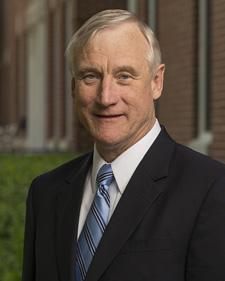
Mark Ross, Professor of Systematic Theology
The title for this article will probably be puzzling to some readers, and perhaps misleading to others. Improving Your Baptism - What is being said here? Is this an article about new and creative ways of conducting a baptism? No, it is not.
The title for this essay comes from Q. 167 of the Larger Catechism: How is our baptism to be improved by us? Before we look at the answer given, let us ponder the meaning of the question. The word improve comes into our language from Old French where it came from two words meaning “into + profit.” The idea was of something being turned for a profit, or, as we might say, turned to one’s advantage. We still use the word this way when we speak of improvements being made on a piece of property. The idea is that the property is enhanced, made more valuable or usable, by the improvements on it. For example, the Oxford English Dictionary cites a 1632 statement concerning property deeded to John Winthrop to the effect that the deed shall become void “if the ... said John Winthrop shall...suffer the island to lie waste, and not improve the same.” In other words, the property was given to Mr. Winthrop with the express condition that he make good use of the land and not neglect it.
I dare say that a similar demand is placed on those who receive the precious mark of baptism: they are to make good use of it and not neglect it. But how is this to be done? The answer given to our question in the Larger Catechism addresses this very issue, teaching us how to make the most of our baptism as a remarkable gift from God.
Far too few of us have ever thought about making good use of our baptism. For most of us, baptism is a thing of the past. We look upon it as something important which needed to be done, but now that it is done, we are finished with it. Whatever meaning it had - and most of us are not very clear on that - it had for the time in which it was given. When we are present at the baptism of others, and if we are thinking at all about baptism, we think about what baptism means to them. The idea that we ourselves are to receive a benefit by observing another’s baptism and meditating upon our own normally does not occur to us.
If we attach the significance of baptism just to the moment when the baptism occurs, it becomes very difficult for us to understand what is accomplished by the baptism of infants. “Wouldn’t it be much better;” we ask, “to wait until the children are more aware of what is going on in baptism?” Those who were baptized as adults sometimes vividly recall with great affection the feelings they had when they were baptized. This memory heightens for them the significance of their baptism, and they want this benefit to be given to their children. But to do this is to shift the significance of baptism away from what it means to what we felt or were conscious of when we were baptized. It makes “improving” our baptism an effort to recall the feelings we had at our baptism. This is moving away from what God intends for us.
How then are we to improve our baptism? Consider the answer which the Larger Catechism gives on how we are to improve our baptism:
The needful but much neglected duty of improving our baptism, is to be performed by us all our life long, especially in the time of temptation, and when we are present at the administration of it to others; by serious and thankful consideration of the nature of it, and of the ends for which Christ instituted it, the privileges and benefits conferred and sealed thereby, and our solemn vow made therein; by being humbled for our sinful defilement, our falling short of, and walking contrary to, the grace of baptism, and our engagements; by growing up to assurance of pardon of sin, and of all other blessings sealed to us in that sacrament; by drawing strength from the death and resurrection of Christ, into whom we are baptized, for the mortifying of sin, and quickening of grace; and by endeavouring to live by faith, to have our conversation in holiness and righteousness, as those that have therein given up their names to Christ; and to walk in brotherly love, as being baptized by the same Spirit into one body.
That is a mouthful. We will do well to take it bit by bit. To do this, I shall take the liberty of breaking down this very long statement into several statements, adding words in italics where necessary to make a complete statement of a phrase and to make clear what is being said.
Part 1: The needful but much neglected duty of improving our baptism is to be performed by us all our life long, especially in the time of temptation, and when we are present at the administration of it to others.
The catechism tells us that improving our baptism is something both needful and neglected. That it is certainly neglected will become very clear once we realize what it is we are supposed to be doing when we “improve” our baptism. Why is it needful?
Remembering that baptism is a sacrament will help us to understand why it is needful or necessary for us to improve our baptism. Qs. 162 and 163 of the Larger Catechism tell us what a sacrament is and why sacraments are important to us. Sacraments are outward signs of spiritual things. Among the benefits we can receive from them are the strengthening and increase of our faith and all other spiritual graces (for example, hope, love, perseverance, etc.). To neglect a sacrament is to neglect that which will strengthen and increase our faith and spiritual development. Our catechism teaches that the benefits we derive from baptism are not received automatically just by being baptized. Our baptism must be “improved” or we will not receive from our baptism what we should.
In addition, we are told that this improvement must take place our whole life long. It is not something we can work at for a while and then put it aside as complete. We must do it regularly throughout our life. Again, and again, we are to meditate upon our baptism and put it to good use, so that we might grow in grace.
Two particular times in our life are singled out as times when we should seek to make good use of our baptism: times of temptation, and times when we are present at the baptism of others. How can our baptism help us with temptation? We must remember that our baptism marks us out as belonging to God. We are not our own. We belong to Another. The mark of our Owner is put upon us: His name - the name of the Father, the Son, and the Holy Spirit (Matt. 28:19). Just as the children born to us or adopted by us take on our names, so we in baptism take on the name of God because He incorporates us into His covenant people. As members of His covenant family, He bestows on us both privileges and responsibilities. When we are tempted, our baptism reminds us of the grace extended to us in being made members of His covenant people. With this privilege we also remember the duties we owe to God, namely, our lifelong obedience. The Shorter Catechism states that our baptism signifies “our engagement to be the Lord’s” (Q. 94). The Larger Catechism makes it even stronger: “ ... to be wholly and only the Lord’s” (Q. 165). Remembering our baptism reminds us that we are those who have “given up their names to Christ” (Larger Catechism, Q. 167). Improving our baptism makes this a vivid reality to us.
Improving our baptism not only reminds us of our great duty to resist temptation, it can also give us strength to do so. Our baptism signifies to us that those who repent and believe are united with Christ. As Paul explains in Romans 6, those who are united to Christ are united with Him in His death and in His resurrection. If we are united with him in his death, then we have died to sin and sin no longer has dominion over us. Our baptism tells us that we can resist sin’s temptations because of our union with Christ. Sometimes we allow ourselves to think that we cannot resist, that the temptation is too strong. Our baptism tells us that we are wrong in thinking this way. If we are united with Christ in His resurrection, then the same power which brought our Lord Jesus Christ from the grave will also give life to our mortal bodies (Rom 8:11), enabling us to walk after Christ in obedience and faith.
When we are present at the baptism of others, we are to remember our own baptism and all that it means. Too often, however, observing the baptism of others turns out to be more an experience of sentimentalism than spiritual meditation. We watch to see if the baby is crying or smiling. We look at the proud expression of the parents if the baby is smiling, or the dismay on their faces if the baby screams. We are not consciously meditating on what baptism means to us as Christians, nor are we prayerfully with faith seeking the benefits signified and sealed to us in baptism. By not “improving” our baptism, we reduce it to sentimental value only, thereby missing out on the spiritual grace set before us.
Certainly, we should be praying for the one being baptized when we are present at the baptism of another. But we are also to be praying for ourselves, meditating upon our baptism and all that it means to us.
Part 2: Our baptism is to be improved, or turned to our advantage, by serious and thankful consideration of the nature of it, and of the ends for which Christ instituted it, the privileges and benefits conferred and sealed thereby, and our solemn vow made therein.
Improving our baptism requires thought. We must think about our baptism and all that it means. We cannot do that unless we know what our baptism means. Here our Confession of Faith and catechisms can be of great help to us. We should study these documents and follow up the Scripture references they cite in support of the doctrines stated. Our doctrinal standards were never intended to stand alone. They stand upon the Scriptures. They summarize for us what the Scriptures teach, and they guide into the places of Scripture where certain doctrines are taught. Improving our baptism is a part of meditating upon God’s Word day and night (Ps. 1). By studying, understanding, recalling, and reflecting on the meaning of baptism, we are beginning the process of improving our baptism.
Part 3: Improving our baptism is done by being humbled for our sinful defilement, our falling short of, and walking contrary to, the grace of baptism, and our engagements (or obligations).
As baptism speaks to us about the forgiveness of sins through Christ, it is reminding us of the fact of sin in our lives. Were it not for our sins, Christ would not have had to die for us. We should be humbled by this. We are further humbled when we recall that even now we still sin, and often fall short of what God requires of us. Improving our baptism requires that we think about our sins, lament them, confess them to God, and renew our repentance to turn from them all.
Many people avoid this kind of self-examination and confession because they find it so negative and depressing. “Accent the positive,” they say, “forget about your sins.” There is some truth to be found in this, but not enough for wholesome spiritual growth. It is one thing to forget past sins. It is quite another to ignore present ones. Our call is to examine our life in the light of God’s Word, and to ask His help in prayer to show us if there be any wicked way in us. Finding such things in our lives, we should ask God to forgive and to purify our lives that we may hereafter seek after righteousness.
Part 4: Improving our baptism is done by growing up to assurance of pardon of sin, and of all other blessings sealed to us in that sacrament.
We must always remember that baptism was instituted by Christ. It is not something that the church has invented. It is a visible sign instituted by Christ to testify of great truths. Among these is the full pardon of sin made possible by the death of Christ to all who repent and believe. Baptism seals this promise to us by standing as God’s own mark guaranteeing that which He has promised.
God made a promise to Abraham that his reward would be very great, and that he would surely have a son and many descendants to follow (Gen. 15:1-5). Abraham believed God (v. 6), but he needed help with his unbelief (v. 8). That is, he had faith, but it was weak. He needed reassurance of what he believed. So, God made a covenant with Abraham and gave him a sign to assure him of God’s complete faithfulness to all that He had promised (Gen. 15:9-21). This was done in a way very familiar to Abraham even if strange to us. Animals were cut in two, with one side laid opposite the other. Then in the night God appeared to Abraham by means of a smoking pot and a flaming torch which passed between the pieces of the slain animals. In this way God was pledging faithfulness to His promise. The meaning of the ceremony was that if God would fail to keep His promise, then He should be killed in the same way that these animals were killed. Thus, God’s own life serves as the guarantee of His promise. God’s promise is that He will die if He does not fulfill His covenant promise. As it is impossible for God to die, so it is impossible for God to fail in the keeping of His promise. He cannot lie (Titus 1:2).
By this visible and most dramatic event God had given to Abraham tangible evidence of the promises He had made to him, and of His commitment to fulfill all that He had promised. If in future days Abraham would be tempted to doubt God’s promises, he could recall what he had seen, and reflect upon what it meant. By doing so, he would strengthen his faith in God’s promises. So, it is with baptism. Our Lord Jesus has given baptism to us to serve as a seal for all His promises to us. It is like a notary’s seal guaranteeing the authenticity of a document. It is tangible evidence for the truth of what He has accomplished for us by His death and resurrection, and what He has promised to us. It is His sign to us. Knowing this and meditating on it at the time when baptism is administered helps to strengthen our assurance in what God has promised to us in Christ.
Part 5: Improving our baptism is done by drawing strength from the death and resurrection of Christ, into whom we are baptized, for the mortifying of (or putting to death our) sin, or quickening of grace (i.e., reviving our spiritual life).
One of the most important meanings of baptism is that it tells us about our union with Christ. Baptism assures us that those who repent and believe are baptized into or united with Christ spiritually. In other words, there is a vital, spiritual union formed between Christ and the believer. In this union there is power for overcoming sin and increasing our spiritual commitment. As Paul teaches in Romans 8, those who belong to Christ have Christ living in them by the Spirit. Consequently, there is within them the very same power which brought Jesus up from the dead. That same power can revive us to strive more earnestly after righteousness and against sin and temptation. Baptism is a visible reminder of this important truth.
Part 6: Improving our baptism is done by endeavouring to live by faith, so as to have our conversation (i.e. conduct) in holiness and righteousness, as those that have therein given up their names to Christ, and to walk in brotherly love, as being baptized by the same Spirit into one body.
Baptism tells us about many things which believers possess because of Christ in them. It also speaks about all that we owe to God. Abraham’s circumcision did the same for him. It reminded Abraham of his duty to walk before God in a blameless life (Gen. 17:1-14). That mark in Abraham’s flesh was like an engagement ring on a woman’s finger. It spoke of a promise, but it also imposed an obligation. The one who wears the ring has received the promise of marriage, but she must hereafter live as one who is promised to another. So, the one who receives baptism must also live as one who belongs to another. We must remember that we are not our own. We cannot choose our own way in life; it is our duty to find out our master’s will.
As you approach the next baptism in your church, determine that you will improve your baptism. Then as the baptism proceeds, think of the spiritual significance of what is happening. Think of what it means to the one being baptized. Think of what it means to you and to all others who have previously been baptized. Remember that this sacrament is instituted by God and is full of meaning and blessing. Then rejoice in all that is given to us in baptism, and pledge yourself anew to all that is required of you in baptism. Remember what you owe to God for all He has pledged to you. Remember what you owe to others, who like you have been incorporated into God’s covenant people.
If you will do so, you will surely “improve” your baptism. It will no longer be something forgotten and neglected but will be to you a source of renewing grace by which you might grow to be all that Christ calls you to be.
This article first appeared in the journal Faith and Practice: Vol. 1, No. 1, and is used with permission.
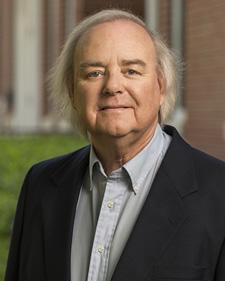
Loyd Melton, Professor of New Testament
Through many years of teaching exegetical courses at Erskine Seminary, I have tried to instill in prospective pastors that exegesis is more than a procedure we learn in a course and then practice it to produce our sermons each week. It is a craft that must be honed for the rest of our lives. If we do that, then our preaching will be fresh, relevant to people’s lives, and may even inspire them to read and study the Scriptures themselves. But the danger of doing something repeatedly, like preaching every Sunday, is that we can easily become stale and predictable, and the surprising way that the truths of Scriptures catch us off guard can be lost.
The analogy I often use is to view exegesis as a toolbox. Careful study of a Biblical text requires the use of many tools. If we are proficient in Greek and Hebrew, translating the text is a critical starting place. If we use only the English versions, then a comparison of English translations can help us to see what the text actually says. Other tools we use are word studies, textual criticism, attention to various literary forms that appear in the passage, a look at the book’s overall purpose and structure, and special attention to the context in which our passage sits.
Our seminary education in Biblical Studies introduces us to various methods that have come about to help us understand the Biblical writer’s original intention in a text. Most of us have been introduced to things like source, form, and redaction criticism. Other methods have appeared in the last 40 years such as reader-response, rhetorical, and various forms of literary criticism. Some of these may be passing fads while others may give us another tool for our toolbox. My purpose here is to give a brief introduction to a discipline that many of us have found helpful as we continue to sharpen our exegetical skills. It goes by many names, but essentially it is a sociological approach to a biblical text. It is probably not helpful for all biblical texts, but the place I have found it most helpful is in the Gospels.
Essentially, this approach focuses more carefully on what appear to be insignificant details in a Gospel passage that give us a window into the actual society in which Jesus lived. These details are things we have read many times, but their possible significance has not been pointed out to us. They usually do not radically change the meaning of a text; they simply allow us a fuller view of the world in which Jesus lived. A simple example appears in the story of the feeding of the five thousand which appears in all four Gospels. The accounts have different details, but they all present us a crowd of five thousand people who are hungry. John specifies that there were five thousand males which would make the crowd even larger. If we look at these accounts, we will note that the miracle occurs in the daytime on a weekday and not on a Sabbath.
We are told that this large crowd is following Jesus, but how can five thousand men be out and about during the daytime on a weekday? The most obvious answer is that they are unemployed and are perhaps seeking something to eat. This somewhat insignificant detail gives us a much clearer picture of their plight. These people are not on some family outing. They are desperate! It is little wonder that they seek Jesus out the next day and want to make Him their king.
Scholars who employ this sociological approach to the Gospels spend much of their time studying the works of Josephus, rabbinic sources, and other documents that have survived which give us a glimpse of what life was like in first century Palestine. To be sure, caution must be observed in taking people like Josephus and the works of the rabbis at face value, as well as Greco-Roman sources that have survived. Yet, used cautiously, this approach can give to us another dimension of the context of the passage we are studying and preaching.
I will mention a few sources that I have found helpful through the years that the growing preacher may consider examining. A classic text is Jerusalem in the Time of Jesus by Joachim Jeremias. Jeremias actually grew up in Jerusalem as the son of missionaries. While many of us will never visit the city of Jerusalem or other sites in the Holy Land, they were a part of his childhood experience. This work provides a detailed description of everyday life in Jerusalem and especially the complex operations of the Temple. The reader of this work must realize that Jeremias’ facts are largely based on what was said about Jerusalem and the Temple in later rabbinic works. It must also be recognized that the rabbinic works are not only much later than Jesus’ day but may somewhat idealize the Temple and the whole practice of Judaism in Jesus’ day. Even with that being said, it is clear that the Temple was a complex operation and was the center of Jerusalem’s economy.
Realizing that may help us when we try to preach about the trial of Jesus before the Sanhedrin. We often preach this story only in terms of the hatred the Jewish leaders had for Jesus. Yet, the Sanhedrin was largely made up of the Sadducees who were the priests but who were also the wealthiest of the Jews. Their money came from the businesses they owned which provided food, lodging, and places to shop for the Jews who made pilgrimages to Jerusalem during the feast days, especially Passover. The primary threat that Jesus posed to them was that He might be some kind of messianic rebel who would lead the pilgrims in revolt against Rome, which in turn would bring in the Roman army to stop it. Obviously, this would threaten their wealth and they would put an end to that. In spite of the fact that Jerusalem in the Time of Jesus is incredibly detailed and quite tedious, Jeremias has provided for us a helpful resource for understanding Jesus’ world.
Another significant work is by Richard A. Horsley and John S. Hanson entitled Bandits, Prophets, and Messiahs: Popular Movements at the Time of Jesus. While it is customary for us to focus on the Pharisees, Sadducees, and Essenes in seeking to understand the world of Jesus, this work focuses on popular movements primarily made up of common people and often led by fiery charismatic leaders. One of these, Theudas, is actually mentioned in the New Testament (Acts 5:36). The primary source of many of the insights in this book is the works of Josephus who lived through the years of the Jewish War in 66-70 A.D.
The value of this work is, once again, that it gives us another dimension from which to understand the trial of Jesus in the Gospels. Jerusalem was literally crammed with Jews from all over the Roman Empire who were there to celebrate the most important holy day in Judaism—the Passover. Passover centers on remembering how God set their forefathers free from Egypt. These worshipers in Jerusalem, however, are visibly aware that they, too, are in bondage when they see Roman soldiers stationed in the Temple complex. It is little wonder that, contrary to their own rules governing the Sanhedrin, the high priest presided over a trial that may have been the fastest in Jewish history! Jerusalem was a powder keg waiting to go off, and the Sadducees hoped they could delay the inevitable war with Rome for one more Passover. With insights such as this, Horsley and Hanson’s work is another useful tool for preaching Gospel passages.
When we study a New Testament passage, we are separated from it not only by a historical barrier but also a cultural one. To aid us, K. C. Hanson and Douglas E. Oakman have written Palestine in the Time of Jesus: Social Structures and Social Conflicts. This work opens up for us the cultural world of Palestinian society in Jesus’ day. We tend to read the New Testament in terms of our own culture, and this may cause us to miss something important in a text. For instance, one of the dominant characteristics of first century society which makes it radically different from ours was the group orientation rather than the rugged individualism that characterizes ours. Most major decisions, like one’s profession or one’s marriage partner, were made by the family or the clan. A young person making a decision would take into account what his family, clan, or even village thought about it. And it was generally assumed that the son would follow his father in his profession. Seeking the approval of the group to which one belonged always took precedence over making a choice that would make him happy and fulfilled. So, it is difficult for us to imagine the utter shock and dismay that the crowds surrounding Jesus would have experienced when in Mark 3:31-35, Jesus equates those who do the will of God with His own earthly family. This would seem to defy one of the fundamental social structures of first century Palestine.
Another reality of the first century was the honor/shame principle. One lived his life seeking honor from those around him and avoiding public shame at almost any cost. The honor/shame principle adds another dimension to the story in Luke 15:11-32 of the rebellious son who takes his inheritance and goes away to live life like he wanted to. When we preach this story, we rightfully focus on the father as he is clearly the central character. We imagine the personal hurt and disappointment he must have felt, but another source of his pain is the public shame he endured. If this father is a picture of God, then we see Him as one who loves sinful people like us so much that He is even willing to suffer shame Himself in forgiving and welcoming and celebrating, in exorbitant ways, a sinner who comes home to Him! Insights like this, and much more, can be gleaned from Hanson and Oakman’s work.
Many of the dear people who hear us preach the Scriptures know the great stories of the Bible, but sometimes those stories seem “long ago and far away.” And a professor or a preacher can never do with Scriptures what can only be done by the Holy Spirit. I often remind students that, theoretically, I can force them to learn facts and ideas by giving a test, but I cannot give them understanding. That’s purely a gift from God. If, however, the world of Jesus becomes a more familiar place to us, there’s hope that through the Spirit’s work it may come alive to the people who hear us preach. Take up and read!
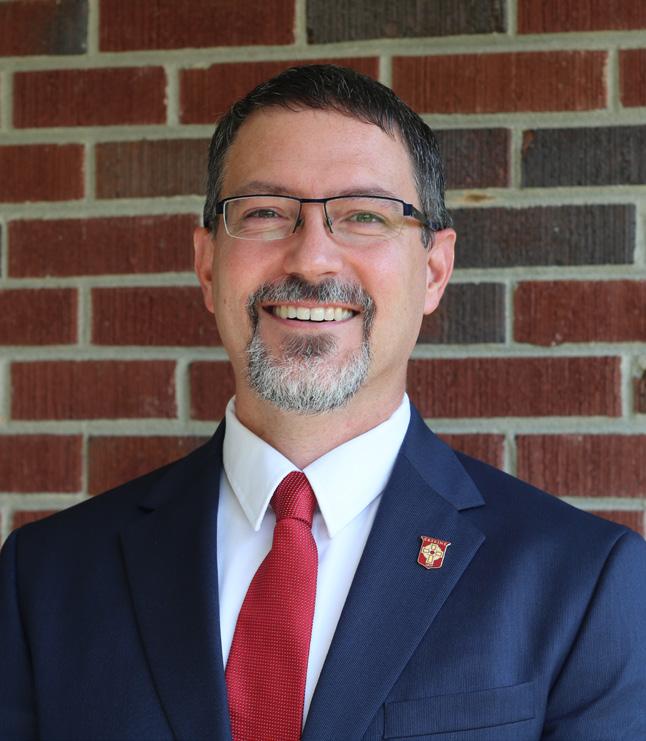
Describeyourworkonthemissionfield.
My wife, Gillian, and I have been involved in Spanish language ministry since 1999. As a young couple we served as directors of the Hispanic ministry at the church where I grew up. During this season we grew in our love for Spanish speakers, immigrants, and our comfort in working cross-culturally. In 2005, we began serving with a Christian Relief and Development organization, Food for the Hungry, in Lima, Peru. And in 2007 we moved to Lima to join this ministry. While serving there, I realized my need for more training, study, and spiritual maturity. So, we returned to the US to begin seminary.
During seminary I served at a Spanish speaking ARP mission church in Columbia, SC, Iglesia Biblica Latinoamericana, first preaching on rotation, then as a student supply. When my time at seminary ended, we felt that the Lord was calling us to serve overseas again. World Witness told us that there was a need in Spain, so our family moved there in February of 2017 to lead church planting work in the northern province of Asturias.
After a couple of years there we then moved south to Alcalá de Henares in the province of Madrid. This allowed us to be closer to the rest of our World Witness teammates. There I connected with an English conversation group led by Christians, Gillian began to teach middle school English at the Evangelical Christian Academy, and we both joined a group of believers in street evangelism in the city’s main plaza.
But in early March 2020, only six months after settling into our new home, COVID-19 swept through Europe. Due to circumstances, I was in the US as lockdowns began. However, we were able to evacuate Gillian and the boys so that our family could be in the same place as we figured out how the pandemic would affect everything. Six months later we returned to Spain. Eventually we resumed street evangelism with periodic pauses as the later waves of COVID-19 temporarily kept us from the plaza. Even though our church planting efforts were hindered due to Spain’s restrictions, COVID-19 provided opportunities to talk to people about the hope we have in Christ in the midst of fear and uncertainty.
Tellusaboutyournewtransitioninministry.
At the end of the summer of 2020, I was reading through the ARP Synod packet and came to the report from World Witness that mentioned the Mobile Theological Training Team’s (MT3) exploration of training pastors in Rwanda and asked for help. While in seminary I had
conversations with David Galletta, the current MT3 team leader, about serving with MT3 and the possibility of developing relationships with pastoral training centers and seminaries in Latin America. At that time, those conversations were just exploratory, now it seemed that there was a possibility that I could join them.
So, I asked the World Witness board if I could be considered to join MT3. After meeting with their strategy and personnel committee, I received approval to join the team and began work in the summer of 2021.
DescribethemissionoftheMobileTheologicalTrainingTeamandyourrolethere.
The work of MT3 is to build relationships with seminaries, Bible colleges, and pastoral training programs in different parts of the world that need help carrying out the task of biblical, pastoral, and theological training. MT3 is a needed resource because, as the gospel goes forth and the church grows around the globe, it is imperative that church leaders have access to sound biblical, theological, and pastoral training. Our desire is to see the indigenous leaders of local churches strengthened, encouraged, and equipped so that they in turn can equip the saints under their care for the work of ministry and for building up the body of Christ.
My ministry’s time is divided between the US and teaching overseas. My time in the US is devoted to study, lesson preparation, grading, and building relationships with students, institutions, and churches. My time outside of the US is spent in teaching, preaching, and growing relationships with the national believers where I serve.
All of my past ministry experiences that I mentioned above will hopefully be brought to bear on this new season of ministry. My prayer is that the Lord will continue to teach me, mold me, and use me to serve Him and strengthen the church both now and in the days to come.
Rev. Justin Brickey (MDiv., 2015) is a team member of World Witness’ Mobile Theological Training Team (MT3). He is currently studying for a Master of Theology (Th.M.) degree at Erskine Theological Seminary. He and his wife, Gillian, live with their four sons in West Columbia, SC.

Brad Anderson
Christian worship may be discussed both as the lifestyle of a Christian (Rom. 12:1-2) and as something observed on public and private occasions (Heb. 10:19-25). The latter is the focus of this discussion of worship as a means of grace.
God calls us to worship Him. In that call we see how worship, an end in itself for the Christian, is also a means of grace. Just as God calls us to Himself in salvation, He also calls believers to “come into his presence” (Ps. 100:2) to participate in central elements of worship: the Word, sacraments, and prayer. God initiates and we respond by the power of His work in us. Therefore, as we engage in worship, we are growing in the benefits of redemption communicated to us by the Holy Spirit through the mediation of Jesus Christ. As Marva Dawn states, by Him making “it possible for us to enter into his presence; God is the one who gives us himself in the Word, the water, the supper.”
The observance of the Christian life is not one of independent spirituality, rather its end is worshiping God with God’s people alongside of you—glorifying God and enjoying him forever (WSC, Q1). The Lord has appointed one day in seven to be a holy resting from worldly engagements. It is a day set apart to rest in Him and engage in public and private exercises of worship (WCF, 21.8). God’s people must draw together in full assurance of faith and not neglect such opportunities to be God’s people together, worshiping the Lord and Savior (Heb. 10:19-25). In the Old Testament this drawing together as a people would result in being drawn into the presence of God (2 Chron. 5:1314). In the New Testament as well, James explains that as God’s people draw near to Him, he will in turn “draw near to you” (James 4:8). It is truly a means of grace if true worship draws God’s people close to Him and His presence while giving Him the praise He deserves. As Martin Luther noted, “At home in my own house there is no warmth or vigor in me, but in the church when the multitude is gathered together, a fire is kindled in my heart and it breaks its way through.” Worship is not a cold exchange of truth and praise to a distant and disinterested deity by a people simply attempting to guess at the desires of a persnickety god. Worship warms us to God by giving Him the praise He is due because He has revealed Himself to us in Scripture and given us grace without merit in the person and work of His Son by the power of the Holy Spirit.
The means of grace are to be observed and exercised in the corporate worship of God’s covenant people (WCF, 21; DPW, III & V). In public worship we use those things which God has given us in His Word that reveal His justifying and sanctifying grace by the power of the Holy Spirit. His Word is to be read, preached, and accompanied by the sacraments. Prayers of thanksgiving,
adoration, supplication, and confession are to be offered to God alone. Worship is what disciples of Jesus do, enriching the fellowship of the saints.
Proper worship draws Christians closer to God and one another. The Directory of Public Worship states, “Christian worship is a work of God’s sanctifying grace by which He draws His people into communion with Himself and calls forth their active, grateful, obedient, loving, joyful, reverent, whole-hearted response to all He is and has done for them” (DPW, III.1). Also “public worship is a holy convocation in which the Triune God meets with and ministers to His assembled covenant people through Word and sacrament, and His people respond with praise, thanksgiving, repentance, confession of sin, supplication and confession of faith” (DPW, III.6).
Worship is also edifying. For as Paul states, let all things in worship “be done for building up” (1 Cor. 14:26). As He dwells with and in us (1 Cor. 3:16) we are changed and formed by Him. James K. A. Smith, speaking against the modern propensity to make worship solely an individual act of religious self-expression observed anywhere at any time reminds us, “Christian worship is also a formative practice precisely because worship is also a “downward” encounter in which God is the primary actor. Worship isn’t just something we do; it does something to us. Worship is a space where we are nourished by Word and sacrament—we eat the Word and eat the bread that is the Word of life.” In active worship of God with his people we engage the “specially charged conduits of the Spirit’s formative power” where “Christian worship around Word and table is a unique ‘hot spot’ of the Spirit’s wonder-working power . . . for it is in the sanctuary that we are made into a people of praise. In communal worship we receive the unique promise of the Spirit that is tethered to Word and sacrament.” It is here that we can see how the Psalmist proclaims that he was not able to discern his own turmoil and the Lord’s leading until he “went into the sanctuary of the Lord,” held by God’s right hand, and from that place could rest in the refuge of the Lord and tell of His mighty works (Ps. 73). Worship brings us into closer communion with God and one another as the congregation proclaims His mighty works. In this, God actively nourishes and builds up His people by the power of the Holy Spirit.
Practicing the means of grace helps us to know and be built up into Christ, and also helps God’s people develop habits that identify us as citizens of God’s kingdom. In gathering together as God’s people in worship we are able to encourage and build up one another (Heb. 10:25; 1 Cor. 14:26). Smith explains this unity in describing Colossians 3:15-16, “We clothe ourselves in Christ’s love (Col. 3:12-14) and ‘put on’ the virtue of love by letting the word of Christ dwell in us richly; by teaching and admonishing one another; by singing psalms, hymns, and songs of the Spirit.”
Engaging the means of grace is a matter of Christian formation—the building up of God’s people. It is to understand that we are being made new (Rev. 21:5), being re-formed in the image of Christ (Rom. 8:29) for in Him we live, move, and have our being (Acts 17:28), not merely informed as if
sanctification is something solely for the mind. To be reformed in the image of Christ is to know that He is completing the work He started in us (Phil. 1:6). The goal of the practice of the means of grace is to say along with Paul that God’s people count all things “as loss for the sake of Christ. Indeed, I count everything as loss because of the surpassing worth of knowing Christ Jesus my Lord” (Phil. 3:8). To know Christ is to be built up in Him as He holds all things together (Col. 1:17). “For from him and through him and to him are all things” (Rom. 11:38). The means of grace are meant to form us into the likeness of our Savior for “we are being transformed into the same image from one degree of glory to another” (2 Cor. 3:18). While it is the Holy Spirit who works in the believer, it is the duty of Christians to actively engage any channel by which they may access that work. All of the means of grace are meant for the building up of Christians corporately and individually, that when engaged properly is building the church up in love (Eph. 4:16). Learning to love God and one another takes practice. These means are the channels by which to do so.
Dr. Brad Anderson (MATS, 2002; DMin., 2017) is pastor of Edwards Memorial ARP Church in Cayce, SC. This article first appeared on the blog Seventeen82 and has been reprinted with permission. He and his wife, Kelley, live with their five children in Columbia, SC.

Mark Baynes
I still remember it vividly in my mind. Early on in my ministry I was helping start a contemporary worship service in a historically traditional style church. Things had been going fairly well, but I still sensed some uneasiness within the congregation of where it all might be going. I was returning back into the sanctuary with about five minutes until the start of the service. As I walked down the far-right aisle, an elderly woman stepped out from her pew seat and cut me off. It was evident by the look on her face there was something serious on her mind. “Young man,” she said, “I’ve got a problem.”
What kind of problem might it be? I worked with the youth group, as well as leading music, and I thought it might be something connected with that. “Well, Ma’am,” I replied politely, “maybe I can help you with it?” The next words out of her mouth completely threw me for a loop. She sternly replied, “If you would just leave your guitar at home, then you would solve my problem.” The momentary awkward silence between us and the piercing look in her eyes made that twentysomething, “wet behind the ears” worship leader freeze up. What could I say? Looking back, I wonder what I would say now? I sheepishly climbed the platform and began leading the opening song, trying my best not to make eye contact with my complainant. Did she hold the solution to Biblically faithful worship? Was getting worship right really that simple? Just leave my guitar at home and all would be well? Could I not have unwisely and imprudently replied, “‘Well Ma’am, if you would allow me a moment, we could remove the organ out of the sanctuary and then all my problems would be solved.” Was it just that simple? Is that what was needed to make worship right? Remove the organ and all would be well in my worship world? Of course not.
Unfortunately, consumer-driven worship often makes the solution to our self-inflicted problem that simplistic. Change the instrumentation, turn up the volume, and everything will be just fine and dandy; or even worse, fire the non-dynamic worship leader who lacks charismatic “stagepresence,” and find someone who can play more radio friendly, up-tempo songs with gusto. God will love our loftier vision, the pews will be packed, and as Mr. Pragmatism might ask, “What could possibly be wrong with that?” This is certainly the belief many have employed in the modern era. However, we are still left asking why there is so much division, unhappiness, restlessness, and even anger between church members and various age groups who claim to be bound together in unity through Christ? Like determined wrestlers, each stylistic side dogmatically grapples with the other, hoping to gain the advantage for the pin. Rather than content, worship style consumes the modern
church’s efforts, with the unsatisfactory result being compartmentalized worshipers who never become conversant on matters of substance and cannot enjoy the unity Christ died to give them. Unified forever by the cross of Christ, separated on Sunday by our preference is the treasure-less desert island on which we have landed. Of course, the danger of consequence is that a church estranged in its corporate worship will find it difficult to unite for other types of ministry, witness, and fellowship throughout the week.
The story is told of two men sitting in the back of a church listening to a Christian rock band on the platform. While the young band was evidently sincere, the best that could be said about them musically was that they were just — well, dreadful. After enduring a couple of songs, one man turned to the other and said, “Well, we must be getting ministered to because we’re certainly not being entertained!” This humorous story brings up a noteworthy question: “How does a local congregation understand the role of music in its life and worship?” For what purpose did God give it? And for what purpose do we use it? Is it for entertaining attendees and attracting unbelievers? Could the Bible give us other reasons worth considering? Modern music ministries often contain their own regional microclimates and find themselves intensely influenced by the unpredictable weather patterns of the radio dial or individual I-pod song selection. Scores of people come expecting to hear in church what is on their car radio or mobile device, and it makes for an impossible situation for any worship leader to accommodate.
Yet, even confronting this reality risks conceding that music, bands, lights, and sound systems are the center of the service, and that other Biblical essentials like Scripture, prayer, and communion — not to mention confession, repentance, giving, and pursuit of holiness — are peripheral options. Like Christmas ornaments, we mistakenly believe ourselves free to hang what we desire on our own personal worship tree. This ill-considered and shortsighted quest for personal liberty in worship, however, leads us to another question: “If Christian worship is according to our personal preference, then what need is there to consult God’s assessment on the matter before us?” Are we the ones who are actually in charge of worship? Or considered another way, if what we long to do for God in worship matters more than what God wants us to do for Him, then where does that leave us? In Thomas Cranmer’s preface to the prayer book, we glimpse the struggles he faced in trying to straddle the worship divide of his own day. In the end, he sought not to. Having found it hopeless to please everyone, he wrote “…it was thought expedient, not so much as to please and satisfy either of these parties, but rather as how to please God — and therefore to profit them both.”
If we take the common crutch of personal preference to its conclusion, could we not more simply send out a weekly survey and adjust accordingly for the next gathering? Regrettably, some churches, in spite of all the worship wisdom available to them over 2000 years, resort to this sort of sightless path — some literally, but others in spirit and culture. It is truly amazing how after all the teaching and historical information available to us, there is so little unity among ‘latitudinarian’ Christians as to how public worship ought to be conducted.
This is in essence the broader lingering Protestant dilemma: seemingly no unified expectations when gathered for worship. Are we destined forever to maunder about worship but never come to any knowledge of the truth about it? Has the modern church ever taken something so seriously in its own mind, yet given so little thought to God’s?
In the year 1543, John Calvin wrote to the Emperor Charles V a treatise entitled The Necessity of Reforming the Church. In his opening statement, he makes a most daring declaration about the significance of worship in the life of the church. From Calvin’s perspective, our salvation and how we worship cannot be separated. They were to be understood as two sides of the same reformed coin:
If it be inquired by what things chiefly the Christian religion has a standing existence amongst us, and maintains its truth, it will be found that the following two not only occupy the principal place, but under them follow all the other parts, and consequently the whole substance of Christianity: that is, a knowledge, first, of the mode in which God is duly worshipped; and, secondly, of the source from which salvation is to be obtained. When these [worship and salvation] are kept out of view, though we may glory in the name of Christians, our profession is empty and vain.
The church of aspiring trendiness has certainly produced its share of worldly additions and wellintentioned distractions. Too often, it has treated God’s desires for worship as a ‘wee’ token trinket on the mantlepiece; and with little Biblical restraint has perilously sought, as Calvin warned against, “to be wiser than God Himself.” There comes a season in every congregation’s life, however, where it must be convicted by the Holy Spirit enough to ask in the Reformer’s words, “Has our profession become empty and vain?” No church—no matter its current reputation or godly heritage—is beyond sailing toward the sirens of record attendance, yet crashing on the rocks of unacceptable worship. A knowledgeable sailor of good judgment knows the danger of the sea and therefore respects it; but too many self-assured captains of worship never even acknowledge there are any perils when setting out on the vast ocean of worship. There are. A worship ministry can be capsized by the weight of selfish ambition, broken apart by a squall of bad doctrine, flooded with worldly-wise visions of grandeur, and have crew members washed overboard by the crashing waves of jealously, congregational conceit, and self-absorption. When these sorts of things are not guarded against there will be ill-fated repercussions for the witness, unity, and ministry effectiveness of the local church. The wise and humble church vessel ought never to see itself above honest self-examination in regards to the course it has charted for worship.
In Stephen Lawhead’s epic adventure Byzantium, the young monk Aidan is sent along with a small group of his fellow monks as a special envoy to see the emperor himself in the legendary capital city of Constantinople. He dreams about what awaits him there in that most special city, most
of all the chance to worship in the most magnificent church in the world – the Hagia Sophia. He is persuaded that in that holy place he will be able to worship and pray like never before. In the end, because of unforeseen circumstances and the distractions around him, he never does. As he prepares to leave the great city and church behind, he reflects:
I climbed aboard the ship and watched the sun set in a dull glow of red and gold as violet shadows slowly stole the seven hills from sight. Only then did it occur to me that I had stood in the greatest church in all the world, and I had not breathed a single prayer, or offered up even the most fleeting thought of worship. That never would have happened at the simple abbey. What was wrong with me? The thought kept me awake most of the night.
As those called to lead in worship, similar thoughts ought to keep us awake for the church today. Like the character Aidan, a man whose life was set apart to worship God, too often it might be said of us that we stood in our grand churches filled to capacity and yet never truly breathed a Biblically modeled prayer, or even gave a fleeting thought to what pleases God in worship. R.S. Simpson warned: “The tendency in Protestant worship is to suggest that the value of worship lies in its effect upon the worshipper. That is not so…the central thing in worship is objective, not subjective. In worship, we certainly receive, but primarily we give. Worship is offering.” Worship is extremely personal to most people, but worship is also extremely personal to God — and frankly, that matters more. Like Abraham binding his son Isaac upon the altar, the often-unregarded part for us is the fact that worship, prior to being a subjective choice, must be an objective obedience that pleases God before it satisfies us (Gen. 22:9).
There is an eastern proverb which translates something like this: “He who rides a tiger can never dismount.” At some point in recent history, the modern-day church decided to mount the tiger of entertainment as a means of attraction and church-growth, and ever since it has been either uninterested or helpless to dismount. Seeking the power of the tiger, it lost the ability to control it. Well-intentioned liturgies, enjoyable experiences, passionate performances, or even loud worship are not the measure of all things. Before we can expect to get anything back from God in our worship, we must aim to give it in a way that He will accept. After all is said and done, that should be our chief delight and the pinnacle of our success. An objective obedience should be the foundation on which we make our subjective choices, but all too often an ambition for secular success, not divine acceptability, has this reversed. We might leave impressed and satisfied with our colorful innovations that aimed to please somebody seen as significant — but does God? At the end of the day, how we worship must be connected to what God has said His expectations are.
The possibility of going to church but not worshiping as God desires should shake us to the core; it most certainly did the best of Christianity before us, not least of all the Church Fathers and the Reformers. How to worship God rightly consumed their energies and efforts as they shaped, and later reformed, Christian worship. In fact, it can be argued that the greatest leadership legacies
of the church are centered on the shaping and reforming of worship according to Scripture — Respondeo etsi mutabor — “I respond, although I will be changed.” Because it sometimes has big plans for a small god, contemporary Christianity surreptitiously worries about how much change the Bible might ask of its worship. Inversely, our nobler forefathers in the faith were concerned about their worship remaining unchanged if God were not accepting it. The divide is uncomfortably clear: we are afraid we might have to bend but they were afraid they never would, and therein lies the difference between greatness and smallness in our Sovereign’s eyes.
What if our hearts, like our spiritual forefathers, were humble enough to confess ignorance apart from Scripture and adventurous enough to explore the hidden coves of ecclesiastical wisdom? Then perhaps the lighthouse of what pleases our God could reveal a haven of restful worship for the modern church’s weary soul. Would it not be wonderful to find a unified vision and expectation in our local congregations, where everyone from the back pew to the platformed pastor could say in agreement, “Worship was great today because our God was pleased with it.”? A peaceful agreement about worship will continue to elude us, until in surrender we come and reason together around what God has revealed His desires are for it. Our carnal natures too easily strive with exhaustion to please man, but not so much to enter the rest of God (Heb. 4:11). It is time to lay aside our culturally conditioned visions of success, and obediently return with joy to what pleases the Author and Lord of it all. He has openly revealed His heart and expectations to those pastors, leaders, and churches that have ears to hear. The question is, are we ready to listen?
Dr. Mark Baynes (DMin., 2014) serves as worship pastor at Church of the Good Shepherd in Clemmons, NC and teaches a Theology of Worship course at Ambassador International University in Zambia. This article was adapted from the preface to his forthcoming book, Worship Under the Influence: Rediscovering the Joy of Acceptable Worship. He and his wife, Dawn, live in Bermuda Run, NC with their wee dog, Sasha.
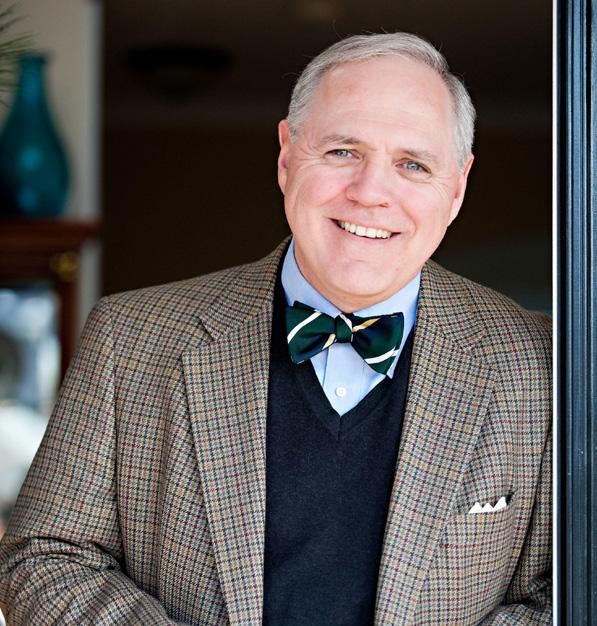


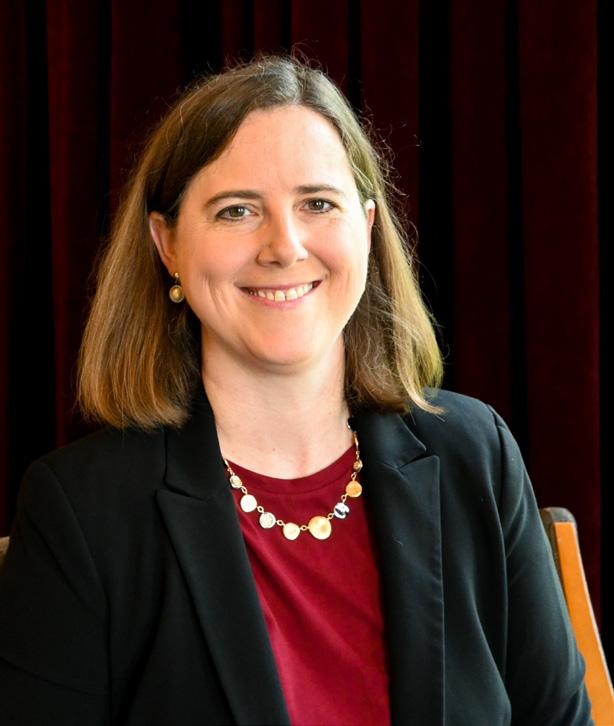
Dr. Michael A. Milton , James H. Ragsdale Professor of Missions and Evangelism, has retired as Provost of the Seminary. He will continue to serve as President of the D. James Kennedy Institute of Reformed Leadership at Erskine Seminary as well as teach courses on missions, evangelism, and the chaplaincy.
Dr. Seth Nelson, Associate Professor of Pastoral Theology and Educational Leadership, has been named Dean of the Seminary. He was recently awarded a Ph.D. in Educational Ministries from Trinity Evangelical Divinity School.
Dr. Toney C. Parks (M.Div., 1998), Distinguished Professor of Ministry, received an honorary Doctor of Divinity degree from Morris College at its May 2021 graduation. He continues to serve as pastor of Mt. Sinai Missionary Baptist Church in Traveler’s Rest, SC.
Dr. C. Rebecca Rine has been named Research Professor of Theological Writing and Research. Prior to coming to Erskine, she worked at Grove City College, Covenant Theological Seminary, and George Mason University. Dr. Rine also serves on the steering committee for the Patristic and Medieval History section of the Evangelical Theological Society.

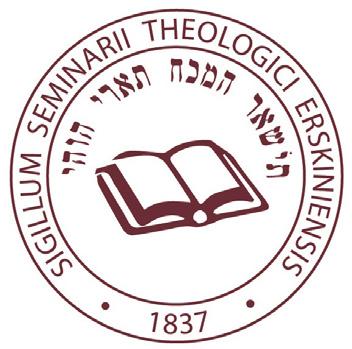
Dr. R. J. Gore (D.Min., 2009), Professor of Systematic Theology, has retired as Dean of the Seminary after decades of faithful service and has received the honor of Dean Emeritus. He will continue to teach courses in Theology, Worship, and Ethics.
On the Gospel Ministry of The Reverend Dr. R.J. Gore, Jr.
With the Board of Trustees Appointment as DEAN OF THE SEMINARY EMERITUS

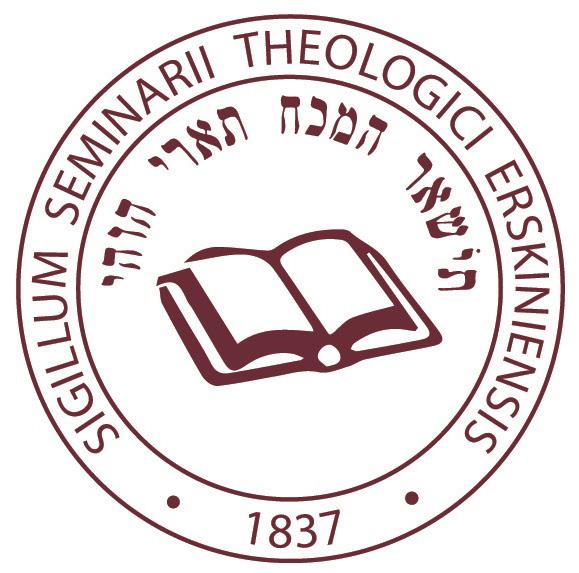
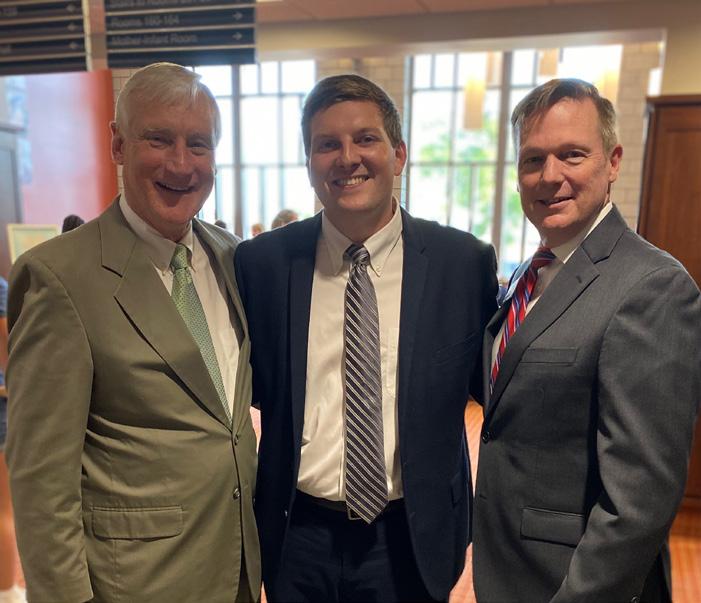
Rev. Alan Martin (MDiv., 2020) was ordained on June 13th, 2021. He is the Assistant Pastor of Campus Ministries and Evangelism at First Presbyterian Church in Augusta, GA., and has been affiliated with Campus Outreach since 2013. At his graduation, he was the recipient of the D. James Kennedy Institute Award for Missions. Rev. Martin lives with his wife, Erica, and their daughter, Jamison, in North Augusta, SC.

Rev. Kenny Maple (MAPM, 2010; MDiv., 2017) was ordained on May 30th, 2021 and is Assistant Pastor at Fairview Presbyterian Church in Fountain Inn, SC. He previously served as a ministry coordinator in Dallas, TX and as a missionary in Sofia, Bulgaria. Rev. Maple lives with his wife, Britni, and their two daughters, Hazel and Eliza, in Greenville, SC.
(From left to right: Rev. Peter Spink, Rev. Rob Hamby, Rev. Josh Martin, Rev. Kenny Maple, Rev. Jonathan Williams, Rev. Brian Habig, Elder Dr. Jimmy Green)

Neel Skelton (MDiv., 2021) will be ordained on August 15th, 2021. He currently serves as the Next Generation Director and previously served as Youth Director at Mitchell Road Presbyterian Church in Greenville, SC. Mr. Skelton lives with his wife, Jen, and daughters, Anne and Hayes, in Greenville, SC.

Dr. John G. Panagiotou (DMin., 2019) has been appointed to Vice-President for Advancement & Development at Cummins Memorial Theological Seminary in Summerville, SC. He currently serves there as Professor of Church History and New Testament Greek and serves as Adjunct Professor of Greek and Early Church History for Erskine Seminary. He and his wife, Correna, live in Charleston, SC.
Consider this Fall’s offering of Presbyterianism in the 18th Century: Scotland, Ireland, and the American Colonies
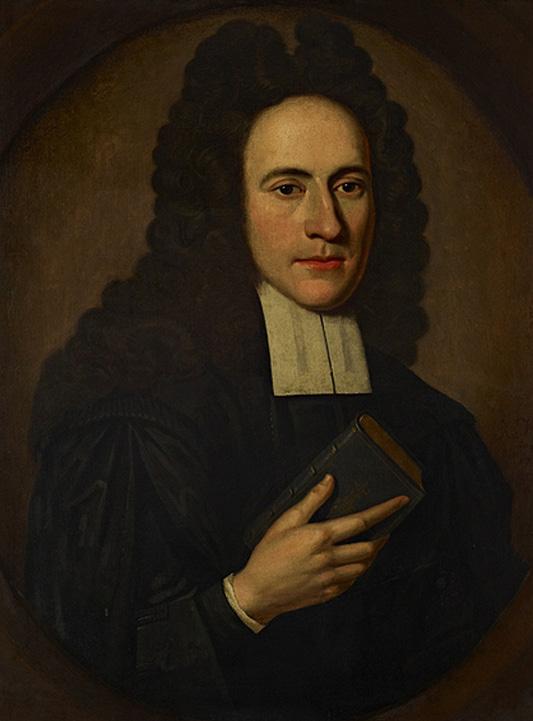
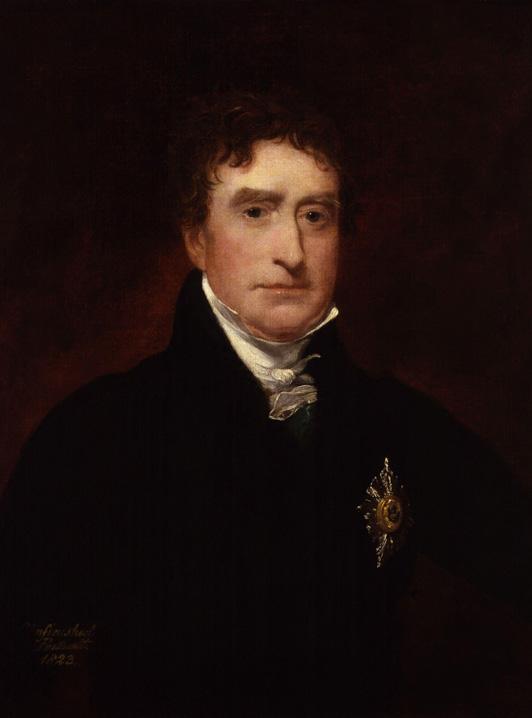
Headless Unknowns? Historian George Pierson describes those that were part of the colonization of America a "decapitated society." Charles Hodge contends that "the early history of the Presbyterian Church in the United States is involved in great obscurity." Such comments act as catalysts for the discussion driven ThM experience of the fall 2021 seminar entitled "Presbyterianism in the 18th Century."
Our class methodology will interact with Archbishop James Ussher's 1650 citation of Cicero: "For who does not know history's first law to be that an author must not dare to tell anything but the truth? And its second that he must be bold to tell the whole truth? That there must be no suggestion of partiality anywhere in the writings nor of malice?"
For information on any program contact, Robin Broome at broome@erskine.edu

Please take a moment to “Like” us and “Follow” us on our Facebook and Twitter feeds and help us to share the good news of the Gospel.
FAITH FOR LIVING
Embodies our vision with weekly Bible messages.
CHAPEL TALK
Equips others with our vision through monthly practical teaching.
MINISTRY MINUTE
Enfolds others into our vision by words of encouragement to gospel ministers and families.
GRACE AND TRUTH
Engages others with our vision as a bi-annual e-news magazine.
LETTERS TO OUR STUDENTS
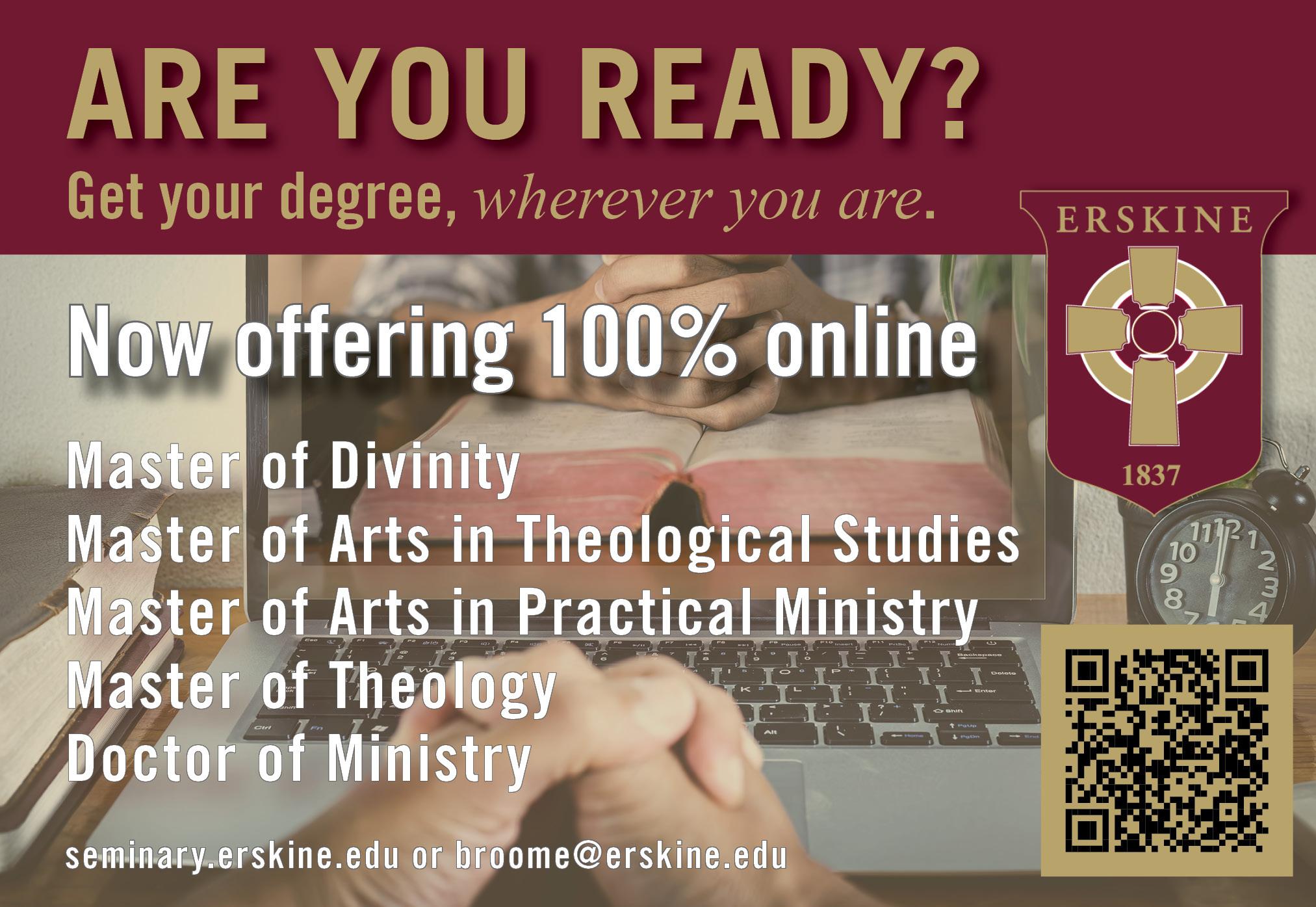
Did you know that Erskine Seminary partners with the Institute of Clinical Pastoral Training to offer Clinical Pastoral Education (CPE) training to chaplains and spiritual care providers? Two units of Clinical Pastoral Education are included in our curriculum. Erskine Seminary has been preparing chaplains for ministry for over 20 years.

The Institute for Clinical Pastoral Training is accredited by the Accrediting Council for Continuing Education Training (ACCET). ACCET is listed by the U.S. Department of Education as a nationally recognized accrediting agency.
For information on these two programs contact, Robin Broome at broome@erskine.edu